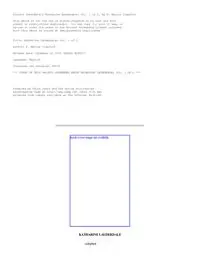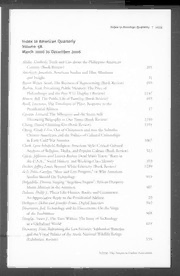
Deep Learning with PyTorch: A practical approach to building neural network models using PyTorch PDF
Preview Deep Learning with PyTorch: A practical approach to building neural network models using PyTorch
Deep Learning with PyTorch (cid:34)(cid:2)(cid:81)(cid:83)(cid:66)(cid:68)(cid:85)(cid:74)(cid:68)(cid:66)(cid:77)(cid:2)(cid:66)(cid:81)(cid:81)(cid:83)(cid:80)(cid:66)(cid:68)(cid:73)(cid:2)(cid:85)(cid:80)(cid:2)(cid:67)(cid:86)(cid:74)(cid:77)(cid:69)(cid:74)(cid:79)(cid:72)(cid:2)(cid:79)(cid:70)(cid:86)(cid:83)(cid:66)(cid:77)(cid:2)(cid:79)(cid:70)(cid:85)(cid:88)(cid:80)(cid:83)(cid:76)(cid:2)(cid:78)(cid:80)(cid:69)(cid:70)(cid:77)(cid:84) (cid:86)(cid:84)(cid:74)(cid:79)(cid:72) (cid:49)(cid:90)(cid:53)(cid:80)(cid:83)(cid:68)(cid:73) Vishnu Subramanian BIRMINGHAM - MUMBAI Deep Learning with PyTorch Copyright (cid:97) 2018 Packt Publishing First published: February 2018 Production reference: 1210218 Published by Packt Publishing Ltd. Livery Place 35 Livery Street Birmingham B3 2PB, UK. ISBN 978-1-78862-433-6 (cid:88)(cid:88)(cid:88)(cid:16)(cid:81)(cid:66)(cid:68)(cid:76)(cid:85)(cid:81)(cid:86)(cid:67)(cid:16)(cid:68)(cid:80)(cid:78) Foreword I have been working with Vishnu Subramanian for the last few years. Vishnu comes across as a passionate techno-analytical expert who has the rigor one requires to achieve excellence. His points of view on big data/machine learning/AI are well informed and carry his own analysis and appreciation of the landscape of problems and solutions. Having known him closely, I'm glad to be writing this foreword in my capacity as the CEO of Affine. Increased success through deep learning solutions for our Fortune 500 clients clearly necessitates quick prototyping. PyTorch (a year-old deep learning framework) allows rapid prototyping for analytical projects without worrying too much about the complexity of the framework. This leads to an augmentation of the best of human capabilities with frameworks that can help deliver solutions faster. As an entrepreneur delivering advanced analytical solutions, building this capability in my teams happens to be the primary objective for me. In this book, Vishnu takes you through the fundamentals of building deep learning solutions using PyTorch while helping you build a mindset geared towards modern deep learning techniques. The first half of the book introduces several fundamental building blocks of deep learning and PyTorch. It also covers key concepts such as overfitting, underfitting, and techniques that helps us deal with them. In the second half of the book, Vishnu covers advanced concepts such as CNN, RNN, and LSTM transfer learning using pre-convoluted features, and one-dimensional convolutions, along with real-world examples of how these techniques can be applied. The last two chapters introduce you to modern deep learning architectures such as Inception, ResNet, DenseNet model and ensembling, and generative networks such as style transfer, GAN, and language modeling. With all the practical examples covered and with solid explanations, this is one of the best books for readers who want to become proficient in deep learning. The rate at which technology evolves is unparalleled today. To a reader looking forward towards developing mature deep learning solutions, I would like to point that the right framework also drives the right mindset. To all those reading through this book, happy exploring new horizons! Wishing Vishnu and this book a roaring success, which they both deserve. Manas Agarwal CEO, Co-Founder of Affine Analytics, Bengaluru, India Contents Preface 1 Chapter 1: Getting Started with Deep Learning Using PyTorch 6 Artificial intelligence 7 The history of AI 7 Machine learning 8 Examples of machine learning in real life 9 Deep learning 9 Applications of deep learning 10 Hype associated with deep learning 12 The history of deep learning 13 Why now? 13 Hardware availability 13 Data and algorithms 15 Deep learning frameworks 15 PyTorch 16 Summary 17 Chapter 2: Building Blocks of Neural Networks 18 Installing PyTorch 18 Our first neural network 19 Data preparation 20 Scalar (0-D tensors) 21 Vectors (1-D tensors) 21 Matrix (2-D tensors) 21 3-D tensors 22 Slicing tensors 23 4-D tensors 26 5-D tensors 26 Tensors on GPU 27 Variables 28 Creating data for our neural network 30 Creating learnable parameters 30 Neural network model 31 Network implementation 32 Loss function 33 Optimize the neural network 33 Loading data 34 Dataset class 34 DataLoader class 35 Summary 36 Chapter 3: Diving Deep into Neural Networks 37 Deep dive into the building blocks of neural networks 37 Layers – fundamental blocks of neural networks 39 Non-linear activations 41 Sigmoid 41 Tanh 43 ReLU 43 Leaky ReLU 45 PyTorch non-linear activations 45 The PyTorch way of building deep learning algorithms 46 Model architecture for different machine learning problems 46 Loss functions 47 Optimizing network architecture 49 Image classification using deep learning 50 Loading data into PyTorch tensors 54 Loading PyTorch tensors as batches 55 Building the network architecture 56 Training the model 58 Summary 62 Chapter 4: Fundamentals of Machine Learning 63 Three kinds of machine learning problems 63 Supervised learning 64 Unsupervised learning 64 Reinforcement learning 65 Machine learning glossary 65 Evaluating machine learning models 66 Training, validation, and test split 67 Simple holdout validation 68 K-fold validation 69 K-fold validation with shuffling 69 Data representativeness 70 Time sensitivity 70 Data redundancy 70 Data preprocessing and feature engineering 71 Vectorization 71 Value normalization 71 Handling missing values 72 Feature engineering 72 Overfitting and underfitting 73 Getting more data 74 Reducing the size of the network 74 Applying weight regularization 75 Dropout 76 Underfitting 78 Workflow of a machine learning project 78 Problem definition and dataset creation 78 Measure of success 79 Evaluation protocol 80 Prepare your data 80 Baseline model 80 Large model enough to overfit 81 Applying regularization 82 Learning rate picking strategies 83 Summary 84 Chapter 5: Deep Learning for Computer Vision 85 Introduction to neural networks 86 MNIST – getting data 87 Building a CNN model from scratch 89 Conv2d 91 Pooling 95 Nonlinear activation – ReLU 97 View 97 Linear layer 99 Training the model 99 Classifying dogs and cats – CNN from scratch 102 Classifying dogs and cats using transfer learning 104 Creating and exploring a VGG16 model 106 Freezing the layers 108 Fine-tuning VGG16 108 Training the VGG16 model 108 Calculating pre-convoluted features 111 Understanding what a CNN model learns 114 Visualizing outputs from intermediate layers 114 Visualizing weights of the CNN layer 119 Summary 119 Chapter 6: Deep Learning with Sequence Data and Text 120 Working with text data 121 Tokenization 122 Converting text into characters 122 Converting text into words 123 N-gram representation 124 Vectorization 125 One-hot encoding 125 Word embedding 128 Training word embedding by building a sentiment classifier 129 Downloading IMDB data and performing text tokenization 130 torchtext.data 130 torchtext.datasets 131 Building vocabulary 132 Generate batches of vectors 133 Creating a network model with embedding 134 Training the model 135 Using pretrained word embeddings 137 Downloading the embeddings 137 Loading the embeddings in the model 138 Freeze the embedding layer weights 139 Recursive neural networks 140 Understanding how RNN works with an example 141 LSTM 144 Long-term dependency 144 LSTM networks 144 Preparing the data 147 Creating batches 147 Creating the network 148 Training the model 149 Convolutional network on sequence data 150 Understanding one-dimensional convolution for sequence data 151 Creating the network 151 Training the model 152 Summary 153 Chapter 7: Generative Networks 154 Neural style transfer 155 Loading the data 157 Creating the VGG model 159 Content loss 160 Style loss 160 Extracting the losses 163 Creating loss function for each layers 166 Creating the optimizer 166 Training 167 Generative adversarial networks 168 Deep convolutional GAN 170 Defining the generator network 170 Transposed convolutions 171 Batch normalization 171 Generator 173 Defining the discriminator network 175 Defining loss and optimizer 176 Training the discriminator 177 Training the discriminator with real images 177 Training the discriminator with fake images 177 Training the generator network 178 Training the complete network 178 Inspecting the generated images 180 Language modeling 181 Preparing the data 182 Generating the batches 184 Batches 184 Backpropagation through time 185 Defining a model based on LSTM 185 Defining the train and evaluate functions 187 Training the model 190 Summary 192 Chapter 8: Modern Network Architectures 193 Modern network architectures 193 ResNet 194 Creating PyTorch datasets 197 Creating loaders for training and validation 198 Creating a ResNet model 198 Extracting convolutional features 199 Creating a custom PyTorch dataset class for the pre-convoluted features and loader 200 Creating a simple linear model 200 Training and validating the model 201 Inception 202 Creating an Inception model 206 Extracting convolutional features using register_forward_hook 206 Creating a new dataset for the convoluted features 207 Creating a fully connected model 208 Training and validating the model 208 Densely connected convolutional networks – DenseNet 209 DenseBlock 210 DenseLayer 211 Creating a DenseNet model 212 Extracting DenseNet features 213 Creating a dataset and loaders 213 Creating a fully connected model and train 214 Model ensembling 215 Creating models 217 Extracting the image features 217 Creating a custom dataset along with data loaders 219 Creating an ensembling model 220
The list of books you might like

The Silent Patient

The 48 Laws of Power

Better Than the Movies

The 48 Laws of Power

Greek Government Gazette: Part 7, 2006 no. 892

Greek Government Gazette: Part 7, 2006 no. 896

bölüm 12

Neotropical Bats from Western Mexico by Sydney Anderson

Governing Natural Resources for Africa's Development

Greek Government Gazette: Part 4, 2006 no. 121

ERIC ED362642: Developments in the Curriculum for the Swedish MSc Programme in Agriculture.

Katharine Lauderdale vol 1 of 2 by F Marion Crawford

The X-ray Halo of GX5-1

ERIC EJ743583: Angle Defect and Descartes' Theorem

Greek Government Gazette: Part 7, 2011 no. 82

Thank You for Being Such a Pain: Spiritual Guidance for Dealing with Difficult People

Multiple Stellar Populations in Galactic GCs: Observational Evidence

analisis laporan keuangan

Identified particle transverse momentum spectra in p+p and d+Au collisions at sqrt{s_NN} = 200 GeV

Afkondigingsblad van Aruba 1993 no. 28




